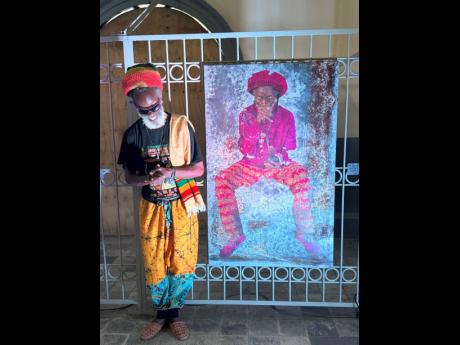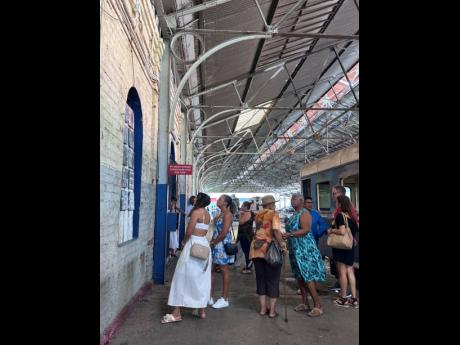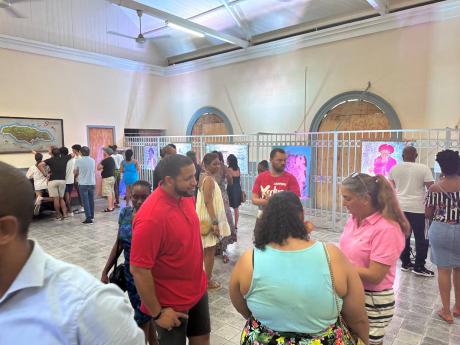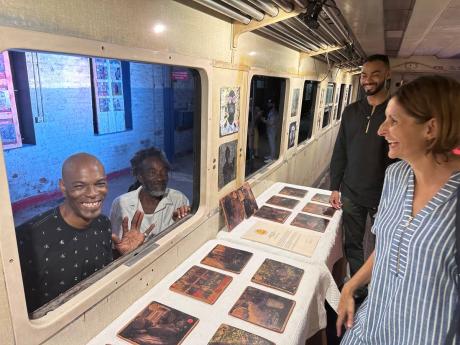A Suh It Guh – An artist’s journey
“A Suh It Guh” was a photographic exhibition by Marina Burnel, a self-taught Kingston-based French photographer whose work is inspired by the city and the people who call it home. She explored the complexities of modern Jamaican society with the backdrop of our rich world-influencing culture. This retrospective show based on the past eight years of her life, (from when she first arrived in Kingston to her return to France with her family scheduled for July 2023), was a life-changing experience.
For this body of work she decided to reconnect with the people and places who deeply inspired and impacted her. Her first exhibition in Jamaica was held at the Art Gallery at Redbones Blues Café in 2016 with the assistance of Kingston On The Edge Urban Arts Festival (KOTE) co-founder Enola Williams.
Five months into this project and overwhelmed by a sense of sadness and inspiration from the island, Marina realised that Jamaica had transformed her spiritually and completely shifted her outlook on life. After developing an unbreakable bond with the Jamaican people and culture and just a month before her scheduled return, Marina made the decision to follow her heart and decided to change the trajectory of her life and stay in Jamaica permanently – “A Suh It Guh”!
REFLECTS HUMAN EXPERIENCE
Marina’s photography often reflects the human experience in the urban backdrop of Kingston. Idealising her raw and natural aesthetic, she deviated from the traditional, displaying her works on aged zinc, wood, and clay, exploring beauty through the broken. This exhibition held at The Kingston Railway Terminus was inspired by KOTE 2014 during which the venue was first discovered as a modern art venue. It became an obvious location for this exhibition for two main reasons: firstly. it was an urban setting in which much of the physical structure comprises aged zinc; and secondly, a railway speaks of a “journey”, and this show was a journey through the people in Marina’s life. As one guest commented, “The synergy between the space and the work gave the exhibition a fresh and authentic feel that was a joy to experience.”
COLLABORATION
The exhibition was opened by French Ambassador Olivier Guyonvarch. Guests were welcomed to the exhibition through the main entrance of the railway from Barry Street to the first-class lounge, where they viewed a 10-minute documentary on Marina and her journey for this show, filmed and edited by Haitian-born, Belgium- educated artist Antoine Humbert. Humbert also had a collection of his ink sketches on display. Guests then flowed onto the main platform of the station before embarking on to a train-car-come-art-gallery dotted with Marina’s smaller works on zinc and clay.
Through a collaboration with Garfield Williams and the Trenchtown Ceramic and Art Centre and funded by the German Embassy, Marina created photographic pieces on clay. After disembarking from the train, guests then entered the newly renovated second-class lounge for the main body of work in the exhibition. A steady current of roots reggae played in the background courtesy of DJ April. One of the central pieces in this main hall was an image on zinc of Grammy-winning Jamaican guitarist Earl “Chinna” Smith, the proceeds of which will be used for the production of a Junior Byles cover album with various international collaborations.
Upon exiting the main hall, guests were given complimentary beverages, and again found themselves on the platform, but this time, face to face with the unique and unwavering “Emani”, hanging boldly from an aged wooden carriage car across the tracks.
Much like Marina’s work, there is beauty in the imperfection and decay found within the railway compound itself. The terminus building was built in 1845 in the Georgian style of architecture and the Jamaican Railway network was second only to Canada in the New World. The last commuter train left the station in 1992. Since then, the railway has mostly been closed to the public and frozen in time.
During the three-day exhibition, a steady flow of over 500 people bore witness to the transformational power of art as they were able to experience new life breathed into the Jamaica Railway, which was remarkable to behold.





